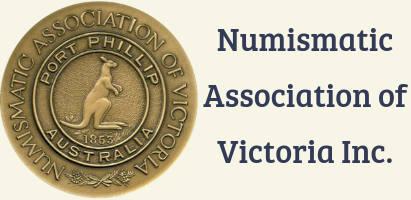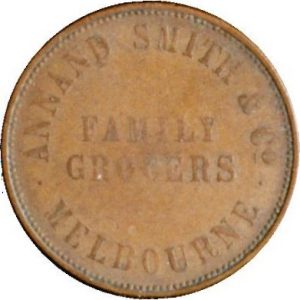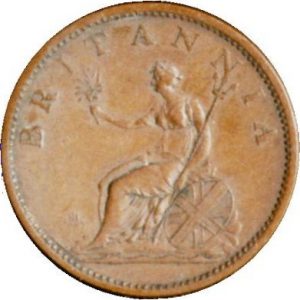One penny token (undated) issued by Annand, Smith & Co, 1849
Throughout the 19th century, Australia consisted of a number of colonies of Great Britain. These colonies relied on the mother country to supply them with coinage to enable normal commerce to be carried out. However the output of the Royal Mint (in London) was insufficient and traders often had serious shortages of small change. In earlier times in Great Britain, various municipalities had issued tokens which circulated to provide the necessary change.
In 1849, Annand, Smith & Co, a grocer in Melbourne (Victoria), had a supply of one penny tokens struck from copper and these were first issued in October 1849. Over the next 25 years, approximately 120 firms (tradesmen) issued tokens in the Australian colonies; most of these were pennies with a significant number of half pennies (½ penny) and a few silver threepences (3 pence). Until 1860, the pennies and half pennies were copper; after that year they mostly struck from bronze.
While these tokens were always illegal, they were tolerated by the Colonial Governments until the Home Government (in Great Britain) was able to supply sufficient regal coin. The issue of the tokens meant a profit for the issuer, free advertising for the issuer, and circulating small change.
The Annand, Smith & Co token has the name and address of the issuer on the obverse and Britannia on the reverse. This representation of Britannia had been prepared by Küchler (of the Soho Mint) for a proof pattern penny of 1806. The design is very similar to that on the then current British penny.
George Annand was a Melbourne City Councillor (1847‑52) and then a member of the Legislative Council (1853). Robert Smith had brief partnerships with various people; his partnership with George Annand was over by 1851.


